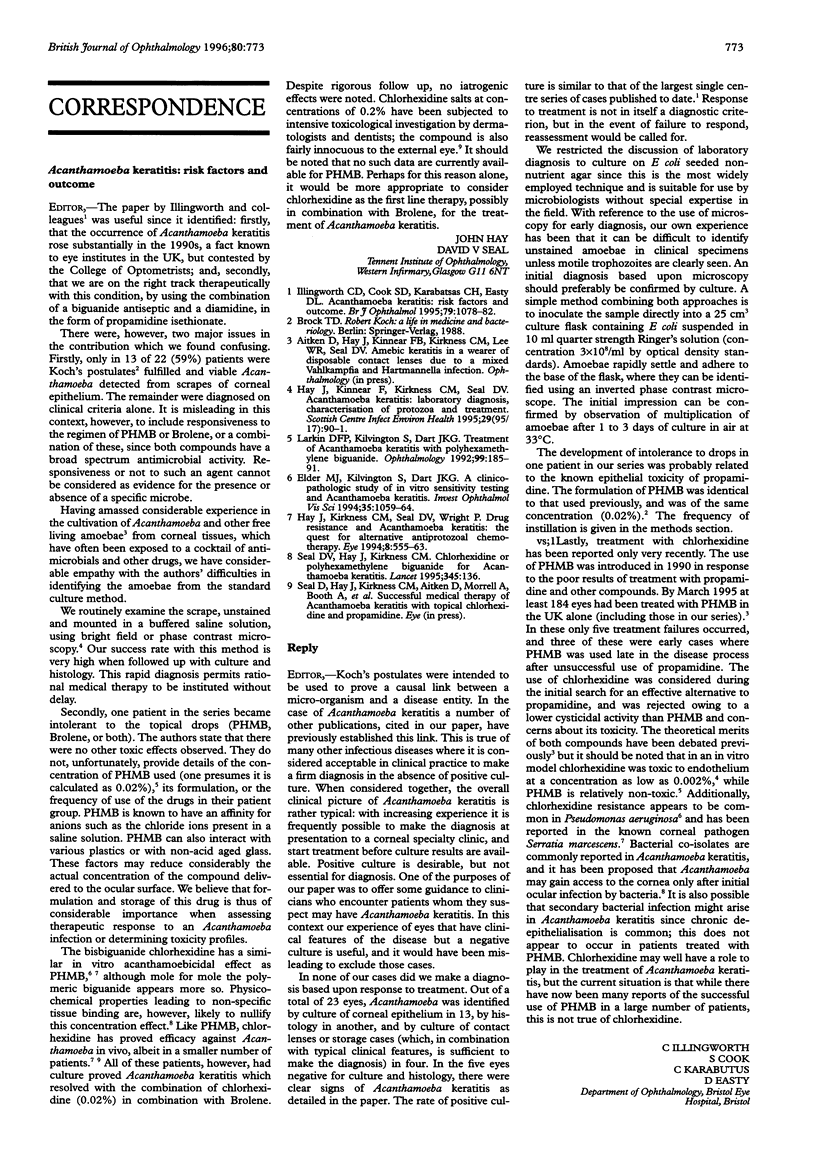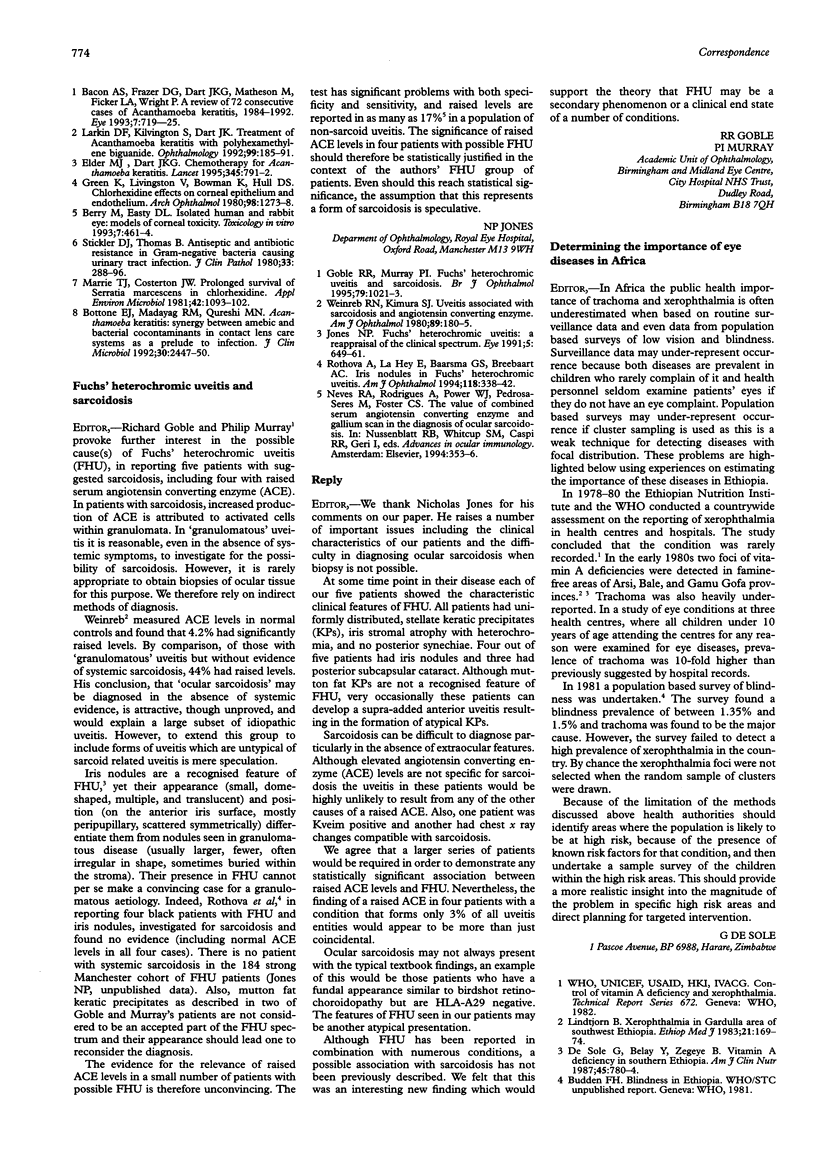Full text
PDF

Selected References
These references are in PubMed. This may not be the complete list of references from this article.
- Bacon A. S., Frazer D. G., Dart J. K., Matheson M., Ficker L. A., Wright P. A review of 72 consecutive cases of Acanthamoeba keratitis, 1984-1992. Eye (Lond) 1993;7(Pt 6):719–725. doi: 10.1038/eye.1993.168. [DOI] [PubMed] [Google Scholar]
- Bottone E. J., Madayag R. M., Qureshi M. N. Acanthamoeba keratitis: synergy between amebic and bacterial cocontaminants in contact lens care systems as a prelude to infection. J Clin Microbiol. 1992 Sep;30(9):2447–2450. doi: 10.1128/jcm.30.9.2447-2450.1992. [DOI] [PMC free article] [PubMed] [Google Scholar]
- Elder M. J., Dart J. K. Chemotherapy for acanthamoeba keratitis. Lancet. 1995 Mar 25;345(8952):791–793. doi: 10.1016/s0140-6736(95)90670-3. [DOI] [PubMed] [Google Scholar]
- Elder M. J., Kilvington S., Dart J. K. A clinicopathologic study of in vitro sensitivity testing and Acanthamoeba keratitis. Invest Ophthalmol Vis Sci. 1994 Mar;35(3):1059–1064. [PubMed] [Google Scholar]
- Green K., Livingston V., Bowman K., Hull D. S. Chlorhexidine effects on corneal epithelium and endothelium. Arch Ophthalmol. 1980 Jul;98(7):1273–1278. doi: 10.1001/archopht.1980.01020040125020. [DOI] [PubMed] [Google Scholar]
- Hay J., Kirkness C. M., Seal D. V., Wright P. Drug resistance and Acanthamoeba keratitis: the quest for alternative antiprotozoal chemotherapy. Eye (Lond) 1994;8(Pt 5):555–563. doi: 10.1038/eye.1994.137. [DOI] [PubMed] [Google Scholar]
- Illingworth C. D., Cook S. D., Karabatsas C. H., Easty D. L. Acanthamoeba keratitis: risk factors and outcome. Br J Ophthalmol. 1995 Dec;79(12):1078–1082. doi: 10.1136/bjo.79.12.1078. [DOI] [PMC free article] [PubMed] [Google Scholar]
- Larkin D. F., Kilvington S., Dart J. K. Treatment of Acanthamoeba keratitis with polyhexamethylene biguanide. Ophthalmology. 1992 Feb;99(2):185–191. doi: 10.1016/s0161-6420(92)31994-3. [DOI] [PubMed] [Google Scholar]
- Larkin D. F., Kilvington S., Dart J. K. Treatment of Acanthamoeba keratitis with polyhexamethylene biguanide. Ophthalmology. 1992 Feb;99(2):185–191. doi: 10.1016/s0161-6420(92)31994-3. [DOI] [PubMed] [Google Scholar]
- Marrie T. J., Costerton J. W. Prolonged survival of Serratia marcescens in chlorhexidine. Appl Environ Microbiol. 1981 Dec;42(6):1093–1102. doi: 10.1128/aem.42.6.1093-1102.1981. [DOI] [PMC free article] [PubMed] [Google Scholar]
- Seal D. V., Hay J., Kirkness C. M. Chlorhexidine or polyhexamethylene biguanide for acanthamoeba keratitis. Lancet. 1995 Jan 14;345(8942):136–136. doi: 10.1016/s0140-6736(95)90106-x. [DOI] [PubMed] [Google Scholar]
- Stickler D. J., Thomas B. Antiseptic and antibiotic resistance in Gram-negative bacteria causing urinary tract infection. J Clin Pathol. 1980 Mar;33(3):288–296. doi: 10.1136/jcp.33.3.288. [DOI] [PMC free article] [PubMed] [Google Scholar]


